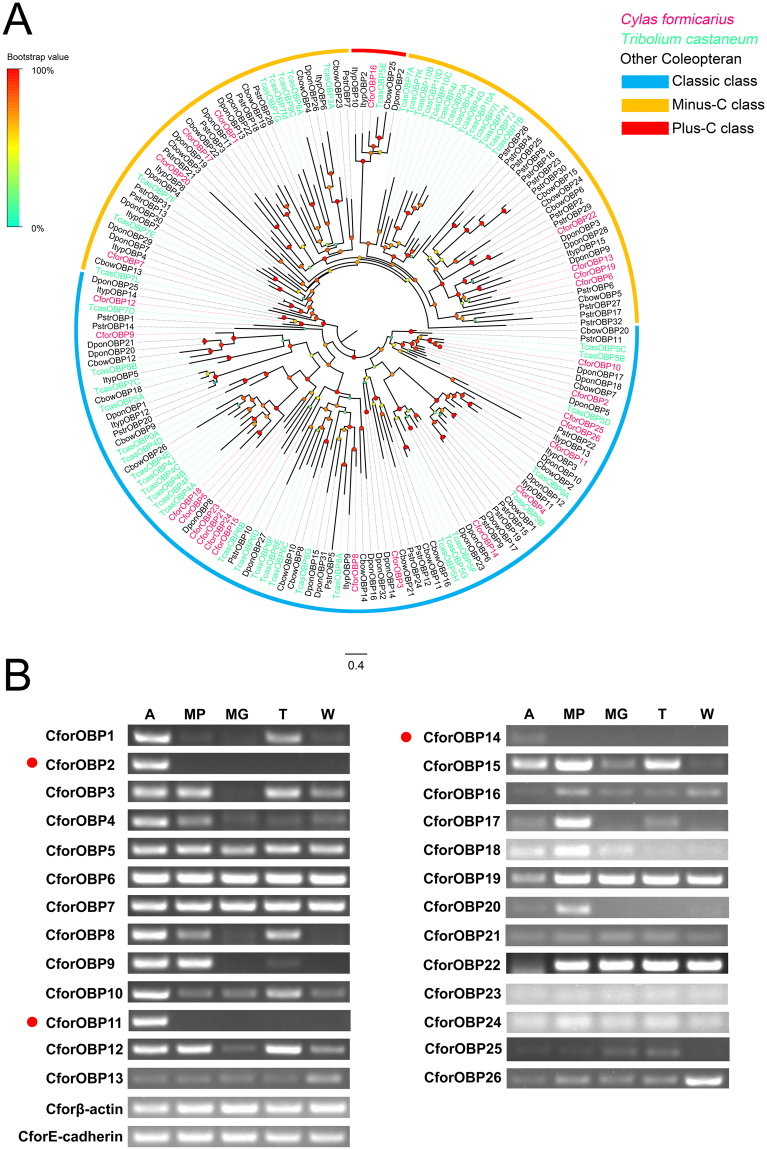Figure 7.
(A) Phylogenetic analysis of OBPs. Classic OBPs from C. formicarius and other coleopteran species form a clade labeled in red. Labeled in orange are Minus-C OBPs from C. formicarius and other coleopterans, and labeled in blue are Plus-C OBPs. Species abbreviations: Cfor, Cylas formicarius; Tcas, Tribolium castaneum; Ityp, Ips typographus; Dpon, Dendroctonus ponderosae; Cbow, Colaphellus bowringi; Pstr, Phyllotreta striolata. Branch support (circles at the branch nodes) was estimated using an approximate likelihood ratio test based on the scale indicated at the top left. Bars indicate branch lengths in proportion to amino acid substitutions per site. (B) Transcriptional profiles of putative C. formicarius OBPs in different body parts determined using semi-quantitative RT-PCR. The OBPs expressed specifically in antennae are labeled with red dots. Two reference genes, β-actin (Cforβ-actin) and E-cadherin (CforE-cadherin), were used as internal references to test the integrity of each cDNA template. Abbreviations: A: antenna; MP, mouthparts; MG, midgut; T, tarsus; W, wing.

